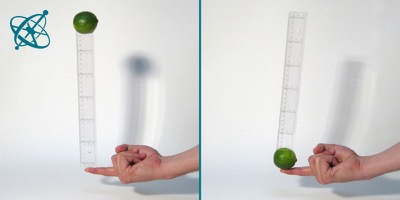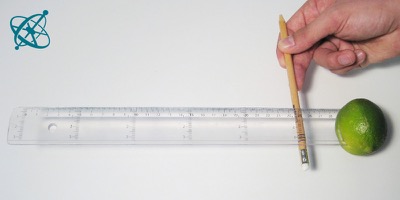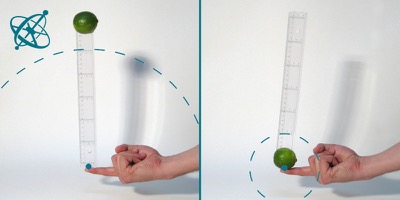 www.sciensation.org | Ciênsação hands-on experiments are published as Open Educational resources under a Creative Commons Attribution-ShareAlike 4.0 International License.
www.sciensation.org | Ciênsação hands-on experiments are published as Open Educational resources under a Creative Commons Attribution-ShareAlike 4.0 International License.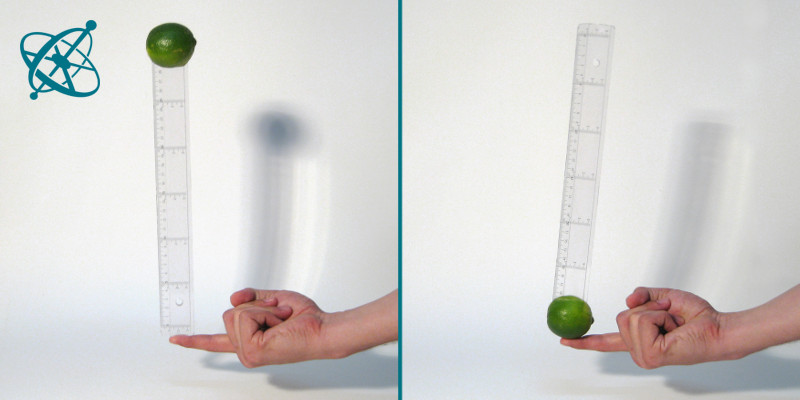
What is easier?
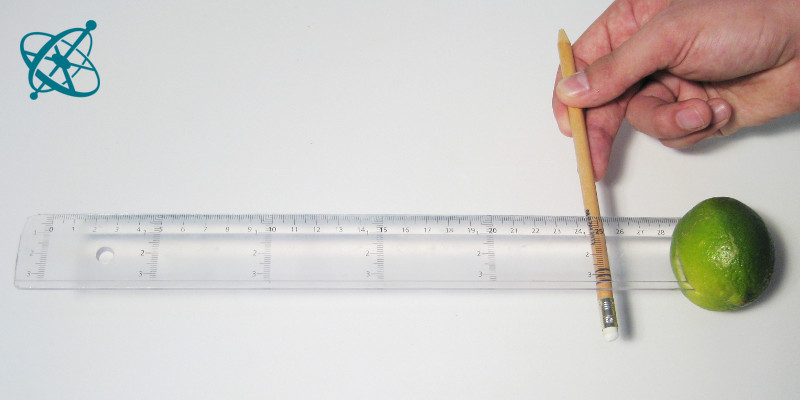
That depends on where the center of gravity lies.
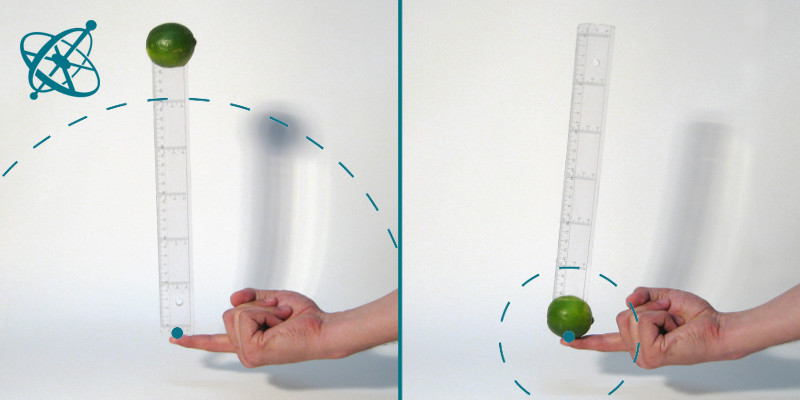
Because this determines the rotational inertia of the system.
Balancing stick
Newton't first law of inertia also applies to rotations – and comes in handy when balancing a stick on a fingertip.
Experiencing the effect of rotational inertia.
Weights that can be attached to the stick (e.g. a fruit or modeling clay)
Prepare 3 or 4 identical sticks (e.g. meat skewers or rulers, the longer the better) by attaching weights near one of the ends.
1. Try to balance the stick on your fingertip. Who can balance it the longest?
2. Why is it easier to balance the stick when the weight is near the top?
Where is the center of gravity?
› You can easily find it by balancing the object horizontally.
Around what point does the center of gravity rotate?
› Around the fingertip.
Why does the radius of the rotation matter?
› The larger the radius, the larger the angular momentum and thus the slower the stick tilts.
The further away the center of gravity is located from the pivot point (here the fingertip), the greater the rotational inertia, and the slower the stick tilts – allowing more time to adjust and thus making it easier to maintain balance.
